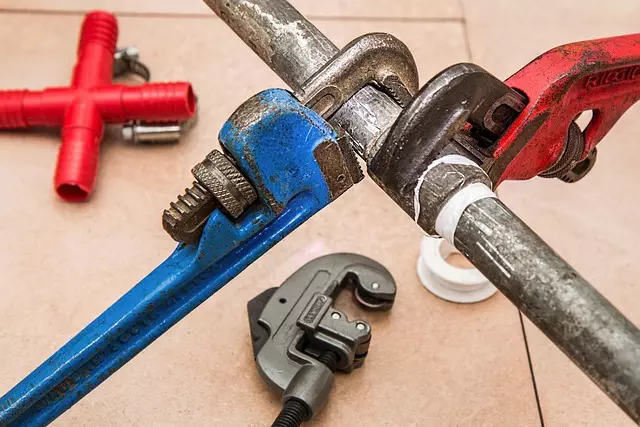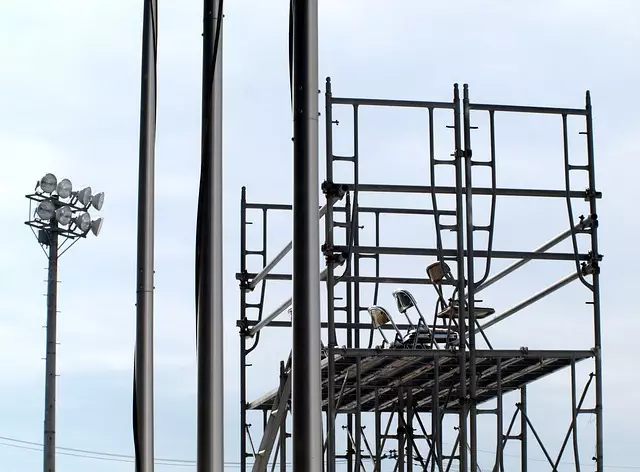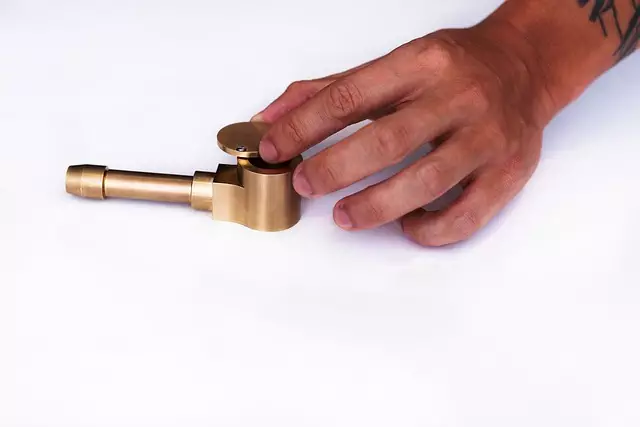Understanding burst pipe causes, such as extreme weather, material age, or improper installation, is crucial for effective repair and prevention. Immediate action involves shutting off water and gas supplies, protecting valuables, and using temporary measures to stop leakages. Essential tools for repairing pipes include clamps, tape, replacement sections, pliers, a wrench, and insulation for exposed pipes in cold areas. Homeowners should follow a step-by-step guide for repairs, avoid DIY mistakes, and consult licensed plumbers for complex issues. Regular insulation, maintenance, and inspections prevent future bursts and ensure plumbing system longevity.
A burst pipe can cause devastating damage, but swift action can mitigate the impact. This comprehensive guide delves into the essentials of pipe repair, offering insights on understanding burst pipe causes, emergency measures, and the tools needed for successful DIY fixes. We break down the step-by-step process, highlight common mistakes to avoid, and provide preventive tips for future protection. Learn when to call a professional plumber and empower yourself with knowledge on effective pipe repair.
Understanding Burst Pipe Causes

Understanding what causes a burst pipe is an essential step in effective pipe repair. There are several factors that can lead to this issue, with the most common being severe cold weather conditions. When water within pipes freezes, it expands, putting immense pressure on the pipe walls. Over time, this pressure can weaken and ultimately cause the pipe to burst. Additionally, pipes subjected to excessive pressure from water flow or structural issues might also fail.
Another significant factor is pipe material and age. Older pipes made of lead, copper, or iron are more susceptible to corrosion and deterioration, making them prone to bursts. Modern plastic pipes, while durable, can still experience problems due to improper installation or damage from moving objects. Identifying the root cause is crucial for successful pipe repair, ensuring that the issue doesn’t reoccur.
Emergency Steps Before Repair

In the event of a burst pipe, time is of the essence. Before professional help arrives, there are some emergency steps you can take to minimize damage and prevent further complications. Begin by shutting off the main water supply valve to stop the flow of water immediately. This crucial step will halt the water damage and give you more time to act. Next, if possible, turn off any gas supplies to avoid potential explosions or additional hazards.
Protect your belongings by moving them away from the burst pipe area to prevent water damage to furniture or electronics. Set up buckets or containers to catch excess water and place towels or absorbent materials around the leak to absorb as much water as possible. These temporary measures will help you manage the situation until a professional Pipe Repair service can assess and fix the issue.
Tools and Materials Required

To undertake a successful pipe repair, there are several essential tools and materials needed. The first step is to gather the right equipment, including a repair kit with clamps, tape, and replacement sections specific to your pipe type. Having a set of adjustable pliers, a wrench, and a hammer is also crucial for tightening connections and replacing joints. For more complex repairs, a pipeline cutter and a soldering iron can be useful additions. These tools enable you to cut through damaged pipes accurately and solder new connections securely.
Additionally, it’s important to have access to materials like pipe insulation, especially if the repair involves exposed pipes in cold areas. Insulation helps prevent future damage caused by temperature fluctuations. Having a variety of connectors and couplings on hand is beneficial as well, as these ensure seamless fitting during the replacement process, ensuring a tight seal and minimizing the risk of leaks, which is key to successful pipe repair.
Step-by-Step Repair Process

When dealing with a burst pipe, acting swiftly is key to minimizing water damage and preventing further complications. Here’s a straightforward step-by-step guide for repairing a burst pipe:
1. Locate the Burst: First, identify where the pipe has burst. Check for visible signs like water spills or bubbling in the walls. This will help you pinpoint the exact repair location.
2. Turn Off the Water Supply: Before starting any repairs, it’s crucial to shut off your home’s main water supply valve to stop the flow of water and prevent further damage. You can usually find this valve near the water meter or in a utility closet.
3. Remove the Burst Section: Using a wrench or pipe cutter, carefully remove the damaged section of the pipe. Ensure you have the right tools for the job to avoid any injuries or further damage.
4. Clean and Prepare: Once the burst pipe is exposed, clean the area to remove any debris or rust. This step ensures a strong bond when reassembling. Dry the pipes thoroughly before proceeding.
5. Choose the Right Replacement: Select a replacement pipe that matches the original size and material. Copper, PVC, and PEX are common choices for different applications. Make sure it’s compatible with your plumbing system.
6. Install the Repair or Replacement: Fit the new pipe section into place, ensuring tight connections. Use appropriate pipes joints, couplings, or fittings to secure the repair. Follow manufacturer instructions for any specific adhesive or sealing product required.
7. Test and Restore Water Supply: After completing the repair, turn on the main water supply valve and check for leaks. If all is well, you can now restore water service to your home.
Common Mistakes to Avoid

When it comes to burst pipe repair, there are several common mistakes that homeowners and renters often make, which can lead to further damage or inefficient repairs. One of the most frequent errors is ignoring initial signs of a leak or burst pipe. Small drips or strange noises might seem insignificant at first, but they could indicate a growing issue. Prompt action is key to minimizing water damage and preventing more serious problems.
Another mistake is attempting DIY pipe repair without proper knowledge and tools. While some basic repairs can be tackled yourself, complex pipe issues often require professional expertise. Using incorrect materials or improper techniques can cause leaks, weaken pipes, or even result in structural damage. It’s always advisable to consult a licensed plumber to ensure the job is done right, especially with burst pipe emergencies.
Preventing Future Burst Pipes

Preventing future burst pipes is an essential aspect of maintaining your plumbing system and avoiding costly pipe repair. Regular maintenance can significantly reduce the risk of bursts, ensuring your home stays safe from unexpected water damage. One effective strategy is to insulate exposed pipes, especially in colder climates, as freezing temperatures can lead to pipes expanding and eventually bursting. Additionally, checking for signs of corrosion or leaks and addressing them promptly is crucial.
Regular inspection and repair of pipe joints and fittings can prevent a lot of issues. Using high-quality materials during installation or replacement, such as copper or PVC, can enhance the durability of your plumbing system. Keep an eye on water pressure levels; excessive pressure might indicate problems that could lead to bursts. Maintaining proper drainage systems and clearing pipes of debris regularly will also contribute to longer-lasting pipe repair and overall plumbing health.
When to Call a Professional Plumber

If you notice signs of a burst pipe, such as water leaking from walls or floors, or hear unusual noises coming from pipes, it’s crucial to act quickly. However, before attempting any DIY fixes, consider whether the damage is severe enough to warrant calling a professional plumber. Burst pipe repair can be complex, especially if the pipes are frozen or located in hard-to-reach areas. Professional plumbers possess the expertise and tools needed to assess the extent of the damage and provide effective solutions for pipe repair.
Seeking expert help is particularly important when dealing with gas lines or complex plumbing systems. Plumbers have the knowledge to ensure safe and thorough repairs, preventing further complications or hazards. They can also offer guidance on preventive measures to avoid future burst pipe incidents.
